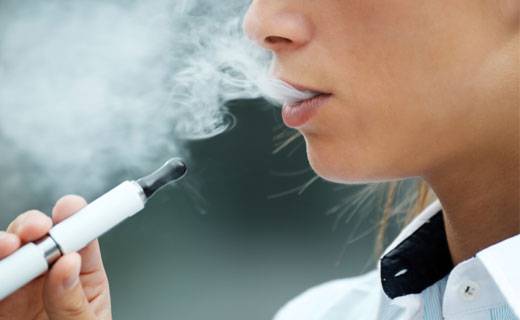Vaping

Using e-cigs (vaping) in the home
Information and practical tips to help you keep yourself and your loved ones safe at home
Is vaping safe?
In recent years, e-cigs, or vapes, have become a very popular alternative to smoking tobacco cigarettes. They work by using a small battery to turn nicotine liquid into an inhalable mist, although nicotine-free options are also available.
Evidence has started to emerge of potential health risks linked to vaping – like the use of the carcinogenic pulegone in some vape flavours and a spate of lung illnesses and a potential death among vapers in the US – and such were its concerns in relation to the health of young people that India has announced a ban on the production, import and sale of e-cigarettes.
Many people nevertheless feel that vaping is a healthier alternative to traditional cigarettes.
As well as the potential health risks, there are some product safety issues you need to consider if you vape, or are thinking about vaping, particularly the potential for children to be poisoned and fire risks. These are important messages for both adults and young people (an ASH study found that in 2019, 15.4 per cent of 11-18-year-olds in Great Britain had tried vaping).
Nicotine poisoning
There is a risk of poisoning from e-cigarette nicotine fluid, and we have heard of some cases involving children. After swallowing nicotine fluids, symptoms are usually mild and include nausea and vomiting. But serious poisoning can happen after swallowing larger amounts, especially when small children are involved.
Children love to watch and copy grown-ups so always keep e-cigarettes out of their reach to prevent accidental poisoning.
If e-cigarette liquid is swallowed, contact your GP or call NHS 111. In an emergency, dial 999.
E-cigarette chargers
Concerns have been raised about e-cigarettes overheating or exploding, and the associated risk of burns, and poorly-made or counterfeit chargers for e-cigarettes have caused house fires.
To reduce the risk of fire, only buy e-cigarettes from reputable outlets, use the correct charger for the device, follow the manufacturer's instructions and don't leave an e-cigarette charging unattended or overnight. As with other electrical devices like mobile phones and laptops, e-cigarettes should not be charged or used if they've been damaged – battery cells that are damaged pose a chemical and fire risk.
RoSPA, CAPT, London Fire Brigade and the Chief Fire Officers Association (now the National Fire Chiefs Council) have produced joint advice, in consultation with Public Health England, on the safety of e-cigarettes in the home.
The sale of e-cigarettes to under-18s is banned or due to be banned in all parts of the UK. E-cigarettes are now regulated in the UK under the Tobacco and Related Products Regulations 2016. Under the regulations, e-cigarette products are either licensed as medicines or, if unlicensed, are subject to quality and safety standards, packaging and labelling requirements, and a ban on print and broadcast advertising.
Do you work on child safety in the home?
Our one-day child safety training course, accredited by City and Guilds, focuses on the most common types of home accidents affecting children and how to prevent them.
Can you help us support more families in keeping kids safe?
Find out more about our Brighter Beginnings Appeal and please consider making a donation.